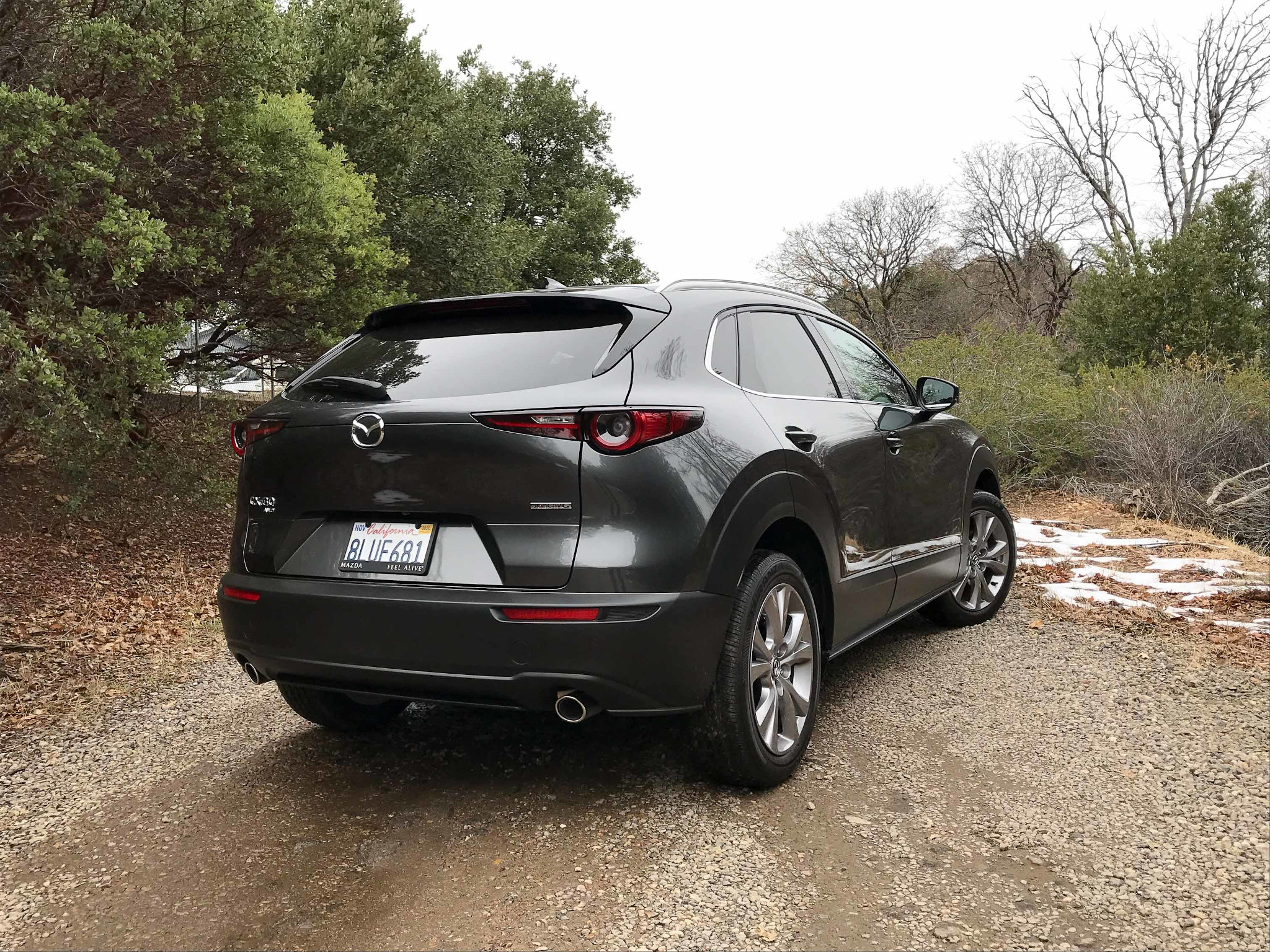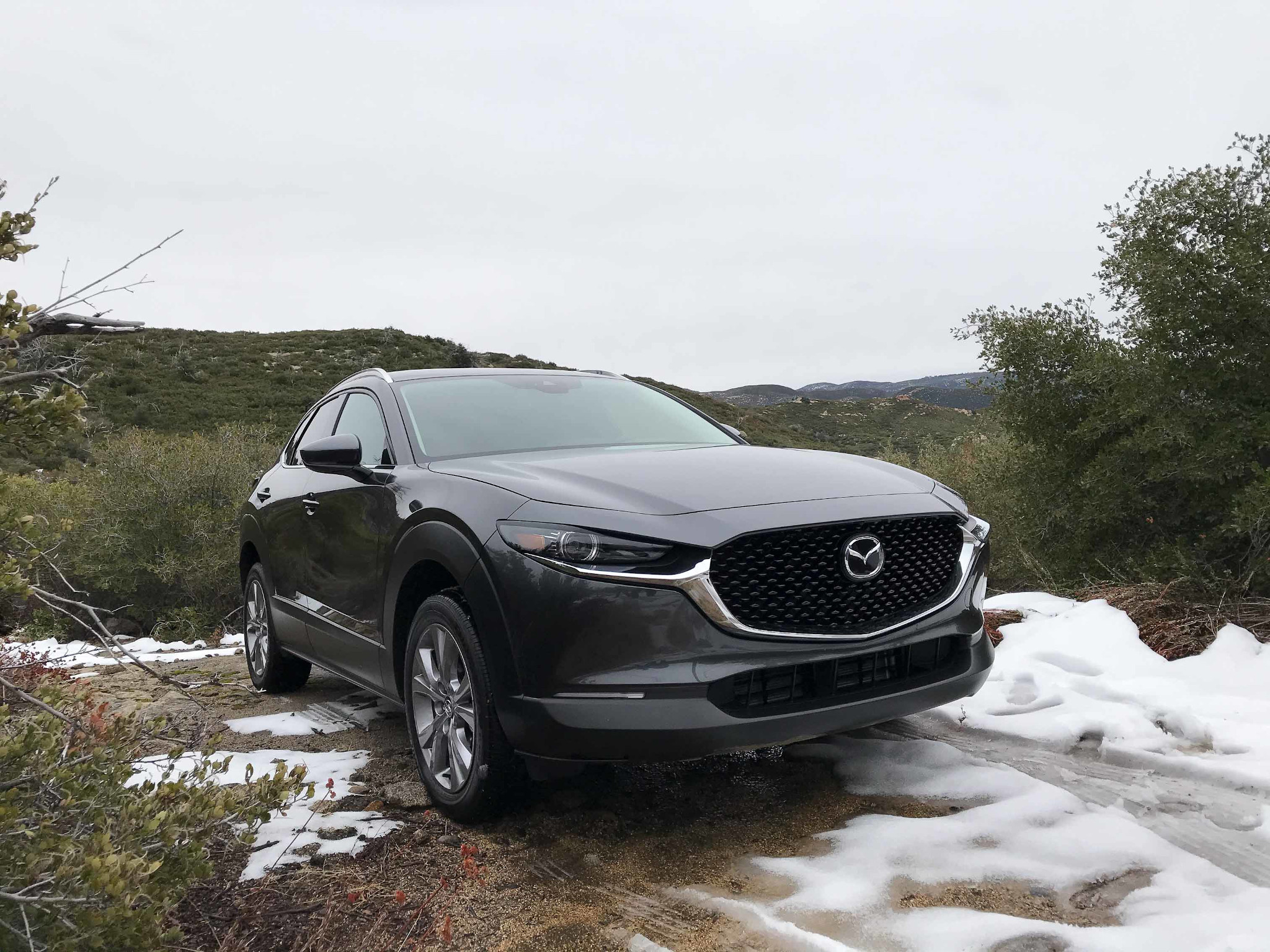The new-for-2020 Mazda CX-30 is marketed as a subcompact SUV with a little more room —and the automaker hopes it’s the perfect size for American buyers. In a saturated category of SUVs that include competitors like the Honda HR-V and Nissan Rogue Sport, the CX-30 may have found its niche. Based on the Mazda3 compact car, it slots between the subcompact CX-3 and compact CX-5 SUVs in Mazda’s lineup. With the extra space, Mazda has packed in a powerful engine, a host of standard safety features and fresh, coupelike styling to boot.
Related: 2020 Mazda CX-30 Review: Stylish Small SUV Right-Sized for U.S.
For full details on the CX-30, be sure to follow the related link above to check out Cars.com reviewer Fred Meier’s comprehensive take. If you want the abbreviated version, here’s a quick list of things we like (and things we, let’s see, how should we put this? Um … don’t) about the 2020 Mazda CX-30:
Things We Like
1. Comfy Cabin
There’s more room inside the CX-30 than the Mazda3 it’s based on, but the interiors are relatively similar. The newly redesigned seats hold you comfortably in place. The top Premium trim gets perforated leather seating surfaces, as well as a layered design on the dash. The cabin is also remarkably quiet thanks in part to the speakers, which are located under the dashboard rather than in the door panels.
2. Storage Space
From front to back, the CX-30 packs a lot of storage in its subcompact interior. The center console and door bins have ample space for passenger items. Cargo room — mid-tier when compared with subcompact competitors — is still quite good (and certainly greater than its cousin, the CX-3). The 20.2 cubic feet of space improves if you fold flat the 60/40-split seatbacks.
3. Power in a Small Package
The 2.5-liter four-cylinder engine puts out 186 horsepower, more power than most subcompacts can manage. It’s mated to a quick-shifting six-speed automatic transmission that seems tuned to get you more mpg.
4. Standard Safety
There’s an impressive amount of safety and driver assist tech in the CX-30 for a subcompact. Standard are a front collision system with automatic emergency braking, adaptive cruise control with stop-and-go, lane departure warning and driver attention alert, among other features. If you climb higher up the ladder of trims, you can also get rear cross-traffic alert and a blind spot warning system.
5. Handles Well
In his review, Meier called the CX-30 “easily the driver’s small SUV,” and that praise comes down to its controlled handling. The standard Mazda G-Vectoring Control Plus system improves upon an already quick and accurate steering response. The brakes feel strong and predictable.
More From Cars.com:
- Shopping for a 2020 Mazda CX-30? Research One, Here
- Find a 2020 Mazda CX-30 for Sale Near You, Now
- All-New 2020 Mazda CX-30 SUV Starts Under $23,000
- 2020 Mazda CX-30 Classes Up Subcompact SUV Class
- Mazda CX-30 Brings Mazda3 Style to All-New Small SUV
Things We Don’t
1. Maddening Media Controls
The 8.8-inch multimedia display sitting on top of the minimalistic dash is not actually a touchscreen — unlike older Mazdas, in which the touch functionality works when the car is stopped. The rotary knob and buttons on the center console are clunky and not so easy to use with Mazda’s built-in multimedia system, which is full of menus that complicate even simple functions with lots of steps. It’s especially difficult to operate Apple CarPlay or Android Auto, which are optimized for use with a touchscreen.
2. Bad Backup Camera
The image relayed from the backup camera takes up only a small portion of the multimedia screen on the dash. And when you turn the steering wheel, the grid lines don’t track with where your tires are going. For a city-sized SUV, the backup camera is not equipped for city-style parking.
3. Can Be a Bumpy Ride
While the ride is comfortable at higher speeds, rough patches of road expose just how firm (read: bumpy) the ride can be.
Cars.com’s Editorial department is your source for automotive news and reviews. In line with Cars.com’s long-standing ethics policy, editors and reviewers don’t accept gifts or free trips from automakers. The Editorial department is independent of Cars.com’s advertising, sales and sponsored content departments.
Source: Read Full Article




